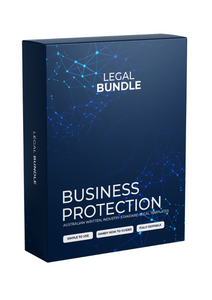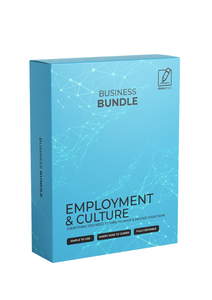How to Start a Business
| Arna Jade
Have you ever asked....
How do I start a successful business?
One of the most common questions for new and aspiring entrepreneurs is “how do you start a successful business?” There are many factors involved, but here are the top ways to increase the probability of success.
The first step is to write your ideas down. Putting ideas to paper helps the mind see them as a reality. It also reinforces the belief that this is real, prompting you to take action. Create your One Page Guide by writing down the following:
What Is Your Purpose?
What do you want to do? Summarize the following:
- Who you are
- What your company is about
- Why you started the company
- Why you want to start the company (for aspiring entrepreneurs)
What Are Your Values?
Write down the following information:
- List 5 values that are important to your business (honesty, reliable, etc.)
- List 5 values that are important to you personally
Make an attempt to align each group of values to your personal beliefs. Your business is an extension of you, and your customers will recognize this as well.
What Are Your Strengths?
Write down the answers to the following questions:
- What are you good at?
- How do you stand out from competitors?
- What skills do you have that can be used to your advantage?
Knowing the answers to these questions could help increase your probability of running a successful business.
Customer Expectations.
What can your customers expect when working with you? This short, yet concise answer is the foundation of your business and core values. It can also be used in your marketing campaigns as well.
What and Who?
This is the time to focus and “what” and “who:”
What? What are you selling? What makes your product or service so special? This should be a short, yet powerful message that quickly explains everything about you and your business. (This is also known as your 60 second elevator pitch).
Who? Who is your target market or audience? Is your business focused on individual retail customers or other businesses? Be specific as to who your business is designed for:
- Small businesses?
- Large businesses?
- College educated?
- Children?
- Senior citizens?
- Millennials?
- High net worth clients?
- Single mothers?
Once the audience is identified, determine the best way to get your target audience to notice you and your business.
Set Monetary Targets
This is one of the most important sections of the guide. Write down the following information:
Year. Write down the first year the business was in operation.
Revenue. Write down a realistic amount of money you want to make in the current year.
Average sale amount. For existing businesses, write down the average transaction amount. For new businesses, write a realistic estimate what you expect the average sale amount to be.
Number of clients needed. Use the average sale amount numbers to determine how many customers you’ll need to reach your revenue goals. This number can be broken down by quarter, month, week, day, and even by hour.
Gross margin. Gross margin is a company’s net sales revenue, minus cost of goods sold. For most successful businesses, the averages are 70% gross margin / 30% net margin. Patience is key: it can take 2-3 years to reach ideal gross margin levels.
Cash on hand. This is the minimum amount of cash your company should have in the bank at all times. While many small businesses are surviving week to week, it is often advised a business should have 3-6 months of operating expenses on hand.
Employees. How many employees will it take to reach the monetary goals as described above? This can help determine if more employees are needed now or in the future.
Monthly and quarterly goals. These goal numbers are obtained from the monetary targets listed above. These numbers are a gauge to determine if the company is on track to reach its financial goals. In addition, what expenses do you project? This information can be added here:
- Build a new website?
- Relocate offices?
- Hire new employees?
- Obtain licenses/insurance/registration/fees?
- Pay taxes?
3-5 year targets. Estimate your desired (albeit realistic) revenues for the selected timeframe, factoring in any additional products and services you may be offering. Next, determine the average client revenue for each transaction, and how many customers needed to reach the target goals.
Milestones and Key Performance Indicators. In addition to monetary targets, other goals can be set as well:
- 5 – 10 new followers on social media monthly
- 10 blog posts/videos per month
- $1000 per month from monetized website revenues
Putting It All Together
The One Page Plan Guide is a great way to organize your business and increase your probability of success. To assist in completing this guide, a One Page Template & bundle are available as well. Click HERE for more information on this excellent business tool. By writing down your goals and creating a plan of action you could be one step closer to creating a profitable business.






